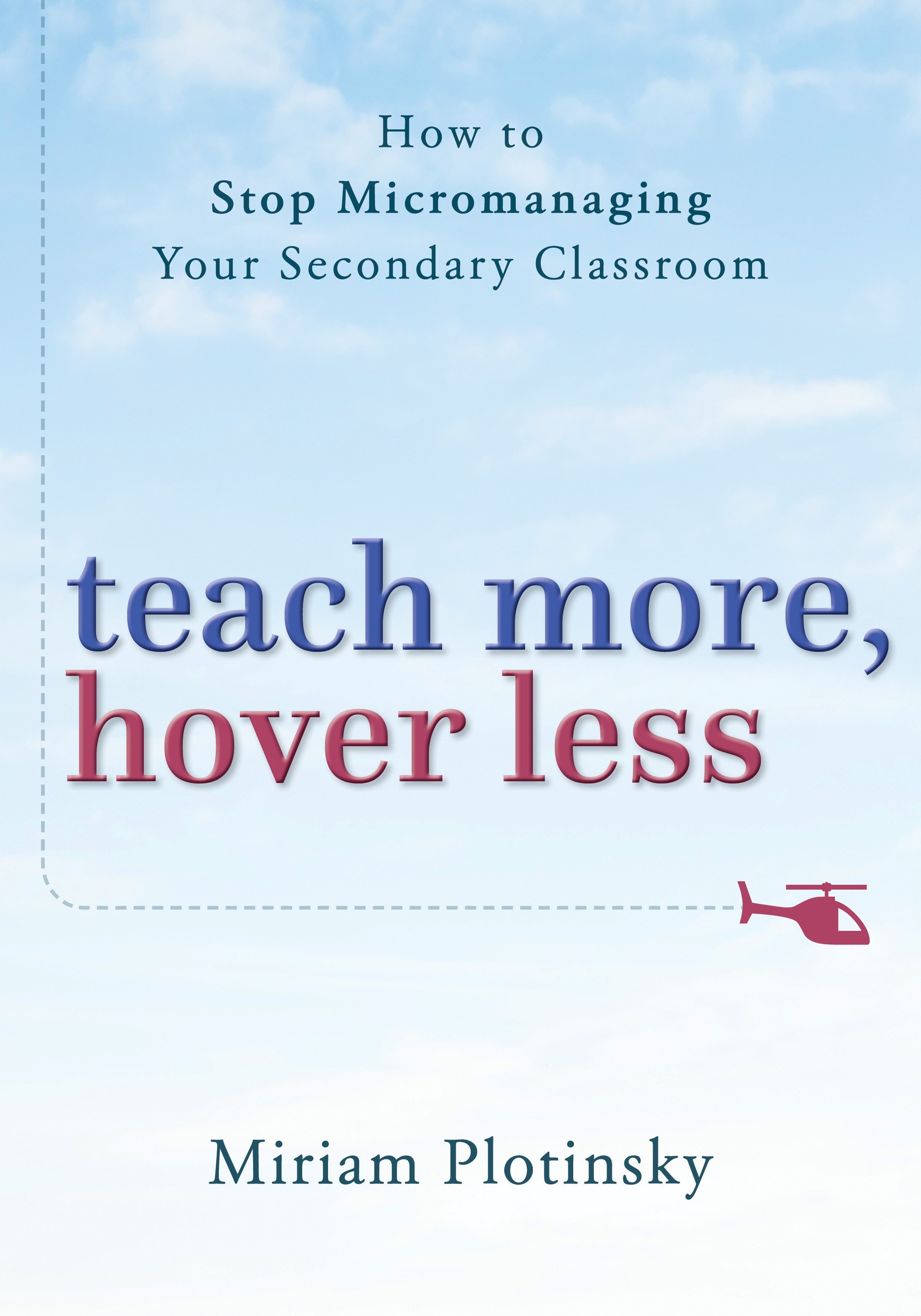Getting Started With "Hover-Free" Teaching
One morning, a social studies teacher hears that his colleague down the hall is out sick. With a few minutes to spare in his planning period, he thoughtfully checks on her class to make sure everything is running smoothly. He walks in and, for a moment, wonders if he was wrong about her absence. One group of students is in a corner, taking turns reading aloud to one another from an article. Another cluster is creating a website together for what appears to be a class project. Some students are working independently on a writing assignment. Everyone is on task, and the substitute smiles at the social studies teacher and gives him a thumbs-up. The teacher thinks,
How can I get my classes to be like this?
Achieving a student-centered instructional model may be challenging, but it is well within the reach of teachers who are dedicated to elevating a culture of shared responsibility for learning. This past school year was objectively one of the roughest for teachers nationwide, resulting in early retirements and widespread resignations.
The double-edged sword of working in education is that each year, both new and experienced teachers have the opportunity to start afresh. As students return to school in the coming weeks, it will be essential to employ teaching methods that can weather unpredictability without adding the stress that leads to burnout. The best way to set our classrooms up for shared responsibility of learning is to implement a student-centered approach to practice, otherwise known as “hover-free” teaching.
In Teach More, Hover Less: How to Stop Micromanaging Your Secondary Classroom (W.W. Norton, 2022), I share a four-step approach to achieving an instructional approach that frees teachers from exerting too much control over their classes: mindset shifts, reframing relationships, planning for engagement, and choice-based instruction. While each of the four stages helps get teachers one step closer to facilitating a “hover-free” learning space, the start of the school year is a particularly apropos time to focus on the second stage, which puts relationships at the foreground of all we do.
In the early weeks of school, it is not uncommon for teachers to frame instruction with community-building activities or “icebreakers.” After all, it is far easier to create a collaborative classroom space when everyone knows one another, and when there is common ground upon which to build. However, too many teachers think of relationships as a purely personal endeavor when there is more going on under the surface of how students and teachers learn to work with one another.
Consider the role of the classic popular teacher. We have all at one point met this person, or perhaps we even are this person. This individual spends a lot of time bonding with students, both during and outside of class. Suppose this teacher has a “lunch bunch” space where kids can come and eat together, and they supervise the space and use the time to bond with students and discuss any range of topics from trending television shows to the score of last night’s football game. There is a lot about the teacher that looks admirable and even self-sacrificial, and not enough adults provide a safe space for kids to gather or give up personal time to do so. As for the students who attend the lunch sessions, they are enthusiastic about having an alternative to the cafeteria. “What a cool teacher,” they say. “He really cares about us.”
If we go a little deeper, however, cracks may begin to appear that are less apparent to anyone who gives the scene no more than a cursory glance. Do all students feel safe coming to this casual “lunch bunch,” or are there some who do not feel like they belong in the group? If the latter, there may be several innocuous reasons that account for their reticence, from a lack of personal chemistry with the teacher to an issue that has transpired during instruction. There might also be something more serious going on, but more often than not, interactions that seem insignificant to a teacher can be magnified in a student’s perception and cause all kinds of complications.
How can a deeper relationship be established between teachers and students, one that results in the kind of connection that focuses less on personal rapport and more on supporting student academic identity? The best way to establish trust is through validation. When teachers openly celebrate the ideas their students share, right or wrong, they send the message that all class contributions are not just welcome, but also cherished. To that end, it is important to continuously challenge our thinking around what constitutes an ideal contribution so that all student responses receive positive attention.
One of the most powerful questions we can ask students is, “What do you think?” Teachers might maximize the way they use this open-ended opportunity by posing a question about lesson content and then asking students to write a response on a slip of paper. A student can collect the answers, and then the teacher shares responses (perhaps anonymously) before selecting a few, both correct and incorrect, to highlight the way they uncover learning outcomes. When we give time and care to the answers students share for the way they pave the way to understanding concepts, everyone grows more comfortable taking risks in a classroom that nurtures an inclusive approach.
Building strong rapport with students is a key determinant of larger success, but the second stage of “hover-free” teaching goes beyond that. Unless relationships that teachers build with their classes include a safe space for academic risk-taking, students may never feel comfortable with themselves as learners.
In the wake of a highly challenging year, we have lost so many skilled teachers. Even more have struggled to keep student growth at the forefront of the complex work educators do every single day. Whether a teacher is new to the profession, came in shortly before the pandemic began, or has been teaching for many years, we could all stand to work less hard. The best way to achieve that is through “hover-free” teaching, which benefits our classroom communities by placing some of the responsibility for learning where it belongs: on everyone’s collective shoulders.
Miriam Plotinsky is a instructional specialist with Montgomery County Public Schools in Maryland, with over 20 years of experience in education. She is a National Board–certified teacher with additional certification in education administration and supervision. In addition to her work as a specialist, she is a freelance education writer who can be found on Twitter @MirPloMCPS.


